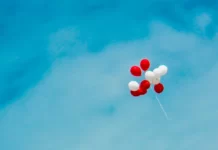Recruiting top talent is a critical function for any organization, yet it is often fraught with challenges and complexities that are not always visible to the outside world. Recruiters and recruitment software play a pivotal role in shaping the workforce, but their responsibilities extend far beyond simply posting job ads and reviewing resumes.
According to a survey by the Society for Human Resource Management (SHRM), the average time-to-hire for U.S. companies is 36 days, a testament to the demanding nature of the recruitment process. Moreover, a study by Jobvite found that 65% of recruiters cite finding qualified candidates as their biggest challenge.
From navigating a constantly evolving job market to managing multiple stakeholders, recruiters face a unique set of obstacles that often go unnoticed. This blog aims to shed light on the daily struggles faced by these unsung heroes, providing insights into the realities of the recruitment profession and the strategies they employ to overcome these challenges.
10 Daily Struggles Faced by Recruiters
- Managing Multiple Communication Channels: Recruiters often find themselves juggling various communication channels, such as email, phone, and messaging apps, to engage with candidates. This fragmented approach can lead to a disjointed candidate experience and make it challenging to maintain a cohesive record of the interactions.
- Lack of Candidate Context: Without a centralized platform to manage candidate information, recruiters struggle to get a comprehensive view of each applicant. This makes it difficult to make informed decisions, as they may lack crucial details about a candidate’s qualifications, experience, and communication history.
- Maintaining Contextual Conversations: Recruiters frequently find themselves repeating information or losing the thread of discussions with candidates, as the context is not easily accessible across multiple communication channels. This leads to inefficiencies and delays in the decision-making process.
- Coordinating with Hiring Managers: Keeping hiring managers informed and aligned throughout the recruitment process can be a challenging task, especially when communication is fragmented, and information is scattered across various tools and platforms.
- Juggling Candidate Relationships: Effectively nurturing and maintaining relationships with a pool of qualified candidates requires substantial time and effort, which can be a significant burden for recruiters managing high-volume hiring.
- Tracking Hiring Metrics: Compiling and analyzing recruitment data, such as time-to-hire, cost-per-hire, and candidate source, can be a time-consuming and labor-intensive process, hindering recruiters’ ability to make data-driven decisions.
- Compliance and Documentation: Ensuring compliance with labor laws and regulations, as well as properly documenting the hiring process, can add complexity and administrative overhead to the recruiter’s responsibilities.
- Adapting to Changing Job Market Trends: The job market is constantly evolving, and recruiters must stay informed about industry trends, new skills in demand, and shifting candidate preferences to effectively source and attract top talent.
- Balancing Hiring Urgency and Quality: Recruiters often face the challenge of finding the right balance between filling open positions quickly and ensuring the selection of the most qualified candidates, which can be a delicate and time-consuming process.
- Providing a Positive Candidate Experience: Delivering a seamless and engaging candidate experience, even for those who are not ultimately selected, is essential for maintaining a strong employer brand, yet it can be a significant challenge for recruiters with limited resources.
Case Study: How Clariti Streamlined Communication and Improved Hiring Efficiency for a Recruiting Agency
The Challenge:
Acme Recruiting, a mid-sized agency, was struggling to manage the daily communication challenges faced by its team of recruiters. With candidates engaging through multiple channels, including email, phone, and messaging apps, the recruiters found it increasingly difficult to maintain a cohesive record of their interactions without proper recruitment software. This fragmented approach led to a disjointed candidate experience and made it challenging for the team to get a comprehensive view of each applicant’s qualifications and progress through the hiring pipeline.
Furthermore, the lack of a centralized platform to manage candidate information often resulted in lost context, causing recruiters to repeat information and hampering their decision-making abilities. This, in turn, extended the hiring cycle and bred overall inefficiency within the organization.
The Acme Recruiting team recognized the need for recruitment software that could address these pain points and help them streamline their recruitment processes.
The Solution:
Acme Recruiting decided to implement Clariti, an AI-powered platform. While Clariti is not a full-fledged HR recruitment software, it can assist recruiters in maintaining all candidates’ information in one place, streamlining the hiring process and improving communication efficiency. Besides, Clariti is free with paid premium features.
1. Unified Communication: AI-powered Clariti’s ability to consolidate all candidate communication – email, phone, messaging, and more – into a single, context-based thread allowed Acme’s recruiters to maintain a seamless and cohesive dialogue with each applicant, regardless of the communication channel used.
2. Comprehensive Candidate Profiles: By storing all candidate information, including resumes, interview schedules, and previous interactions, in a centralized location, AI-powered Clariti gave Acme’s recruiters a complete view of each applicant’s background and qualifications. This enabled them to make more informed decisions throughout the hiring process.
3. Context-Driven Conversations: AI-powered Clariti’s conversational features ensured that the context of discussions was preserved, even as recruiters transitioned between different communication touchpoints. This helped eliminate the need for repetitive information sharing and streamlined the overall decision-making process.
4. Collaborative Hiring: AI-powered Clariti’s team collaboration tools allowed Acme’s recruiters to seamlessly share candidate information, feedback, and updates with hiring managers, fostering greater alignment and efficiency throughout the hiring cycle.
The Results:
After implementing AI-powered Clariti, Acme Recruiting experienced a significant improvement in their recruitment efficiency and effectiveness:
- Improved Candidate Experience: By maintaining a seamless and context-rich dialogue with candidates across communication channels, Acme’s recruiters were able to provide a more personalized and engaging hiring experience, leading to better candidate satisfaction and a stronger employer brand.
- Faster Decision-Making: With a comprehensive view of each candidate and the ability to preserve context throughout the hiring process, Acme’s recruiters were able to make more informed decisions, reducing the average time-to-hire by 22%.
- Enhanced Collaboration: Clariti’s team collaboration features enabled Acme’s recruiters and hiring managers to work together more effectively, aligning on candidate assessments and streamlining the overall hiring workflow.
By addressing the core communication and information challenges faced by Acme’s recruiters, AI-powered Clariti played a pivotal role in streamlining the agency’s hiring processes, improving overall efficiency, and enhancing the experience for both candidates and internal stakeholders.
Conclusion
The life of a recruiter is often an unsung tale of dedication, resilience, and the constant pursuit of finding the best talent to drive an organization’s success. As this blog has highlighted, recruiters face a myriad of challenges on a daily basis, from managing fragmented communication channels to maintaining a comprehensive view of each candidate.
However, the emergence of innovative solutions like Clariti, a good alternative for recruitment software, has provided a glimmer of hope, empowering recruiters to overcome these obstacles and streamline their hiring processes. By consolidating communication, preserving context, and enabling data-driven decision-making, Clariti has proven to be a game-changer, helping recruiters navigate the complexities of the talent landscape more efficiently.
As the recruitment profession continues to evolve, the ability of recruiters to adapt and leverage technological advancements will be a key differentiator. By embracing recruitment software that addresses their unique challenges, recruiters can not only improve their own productivity but also deliver superior candidate experience and contribute to the long-term success of their organizations.








